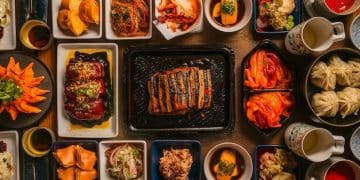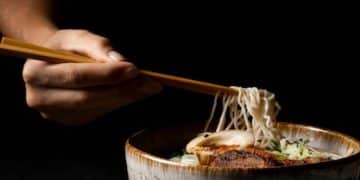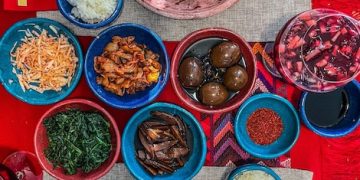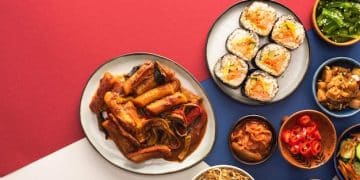Japanese Drama Food: Recreating Delicious Dishes from Your Favorite Shows at Home
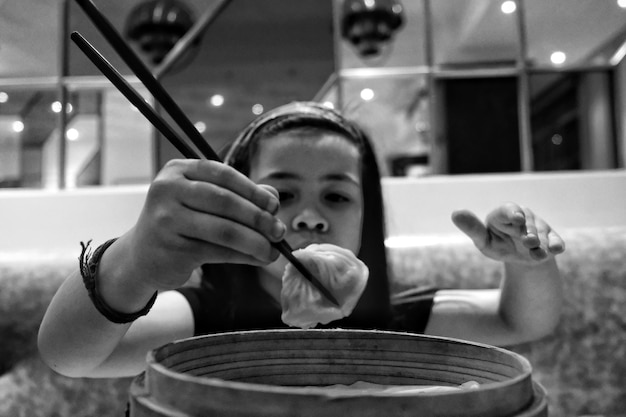
Advertisements
Japanese drama food has captured the hearts and stomachs of viewers worldwide, inspiring many to recreate the delicious and visually appealing dishes featured in their favorite shows at home, blending entertainment with culinary adventure.
Have you ever watched a Japanese drama and found yourself drooling over the food the characters were enjoying? Japanese drama food isn’t just a prop; it’s a central part of storytelling, reflecting culture, emotion, and connection.
Anúncios
Exploring the Allure of Japanese Drama Food
Japanese dramas, or J-dramas, are known for their compelling narratives, relatable characters, and, often, mouth-watering depictions of food. This isn’t merely background noise; it’s a deliberate element that enhances the viewing experience, making us feel connected to the characters and their world.
The food featured in these dramas often plays a significant role, acting as a plot device, a symbol of comfort, or a bonding experience between characters. Whether it’s a meticulously prepared bento box or a steaming bowl of ramen, the presentation and context make these culinary moments unforgettable.
Anúncios
The Cultural Significance of Food in J-Dramas
In Japan, food is more than just sustenance; it’s an integral part of the culture, steeped in tradition and symbolism.
J-dramas often showcase this cultural significance by highlighting seasonal ingredients, traditional cooking methods, and the importance of sharing meals with loved ones. Food represents hospitality, gratitude, and respect, enriching the narrative with layers of meaning.
Visual Appeal and Emotional Connection
One of the reasons Japanese drama food is so captivating is its visual appeal. The dishes are often beautifully arranged, with careful attention paid to color, texture, and presentation. This aesthetic focus heightens our senses and makes the food even more enticing.
Moreover, food in J-dramas often evokes strong emotional connections. A home-cooked meal can symbolize comfort and safety, while a shared dish at a restaurant can signify friendship or romance. These emotional associations make the food all the more memorable.
In conclusion, the allure of Japanese drama food lies in its cultural significance, visual appeal, and emotional connection, making it a captivating element of J-dramas that resonates with viewers worldwide.
Iconic Dishes Featured in Popular J-Dramas
From heartwarming family dramas to thrilling crime series, Japanese dramas showcase a wide variety of dishes that have become iconic in their own right. These dishes not only tantalize our taste buds but also offer insights into Japanese culture and cuisine.
Some of the most memorable dishes include comforting classics like *omurice* (omelet rice), heartwarming *oden* (a type of Japanese hot pot), and flavorful *takoyaki* (octopus balls). Each dish tells a story, evokes emotions, and invites viewers to experience a taste of Japan.
Omurice: A Symbol of Comfort and Love
Omurice, a popular comfort food in Japan, often appears in J-dramas as a symbol of love and care. This dish typically consists of a ketchup-flavored fried rice wrapped in a thin omelet, often adorned with a cute message or drawing made with ketchup.
The act of preparing omurice is often depicted as an expression of affection, whether it’s a mother making it for her child, a lover cooking it for their partner, or a friend cheering up a sad companion. The warmth and simplicity of the dish evoke feelings of nostalgia and happiness.
Ramen: Beyond the Broth
Ramen is another iconic dish frequently featured in J-dramas, showcasing the diversity and regional variations of this beloved noodle soup. From creamy tonkotsu ramen to spicy miso ramen, each bowl offers a unique flavor profile and cultural experience.
In J-dramas, ramen shops are often depicted as gathering places where people from all walks of life come together to share a meal and connect with one another. The communal aspect of eating ramen reinforces the sense of community and belonging.
- Takoyaki: Savory octopus balls topped with takoyaki sauce, mayonnaise, seaweed flakes, and bonito flakes.
- Sushi: From classic nigiri to elaborate sushi rolls, showcasing the artistry and precision of Japanese cuisine.
- Bento Boxes: Carefully arranged lunch boxes filled with a variety of colorful and nutritious dishes.
In summary, iconic dishes like omurice and ramen play a significant role in J-dramas, serving not only as culinary delights but also as symbols of comfort, love, and cultural connection.
Essential Ingredients for Recreating J-Drama Dishes
To embark on your culinary journey of recreating Japanese drama food at home, it’s essential to have a well-stocked pantry with key ingredients. These ingredients form the foundation of many dishes and will allow you to capture the authentic flavors of Japan.
From basic staples like soy sauce and miso paste to more specialized items like dashi and nori, having these ingredients on hand will empower you to whip up your favorite J-drama-inspired meals with ease. Let’s explore the essential ingredients.
Soy Sauce: The Umami Backbone
Soy sauce is a fundamental ingredient in Japanese cooking, lending its savory umami flavor to a wide range of dishes. There are several types of soy sauce, each with its unique characteristics.
For general cooking purposes, a good quality all-purpose soy sauce is a versatile choice. However, you may also want to explore other varieties like light soy sauce (usukuchi shoyu) for delicate flavors or dark soy sauce (koikuchi shoyu) for richer dishes.
Miso Paste: A Fermented Flavor Bomb
Miso paste is another essential ingredient in Japanese cuisine, adding depth and complexity to soups, sauces, and marinades. Made from fermented soybeans, miso paste comes in various types, each with its distinct flavor profile.
White miso (shiro miso) is mild and slightly sweet, while red miso (aka miso) is bolder and more intense. Experiment with different types of miso to find your preferred flavor.
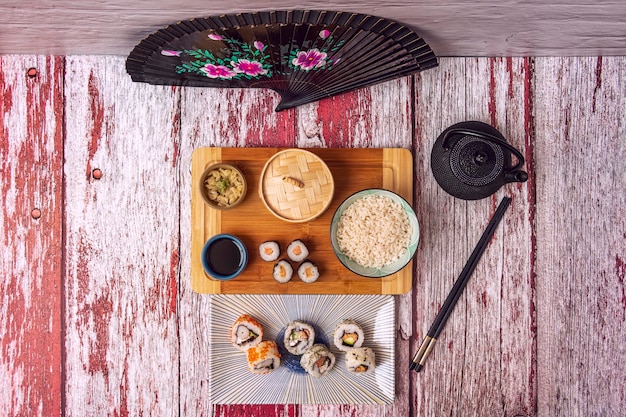
- Dashi: A flavorful broth made from kombu (kelp) and katsuobushi (dried bonito flakes), forming the base of many Japanese soups and sauces.
- Nori: Dried seaweed sheets used for wrapping sushi, making onigiri (rice balls), or as a garnish.
- Mirin: A sweet rice wine used for adding a subtle sweetness and glaze to dishes.
Therefore, stocking your pantry with these essential ingredients is the first step towards recreating your favorite J-drama dishes at home, allowing you to capture the authentic flavors of Japanese cuisine.
Easy J-Drama Recipes to Try at Home
Now that you’re armed with essential ingredients, it’s time to dive into some easy J-drama recipes that you can recreate in your own kitchen. These recipes have been selected for their simplicity, deliciousness, and ability to transport you to the world of your favorite J-dramas.
Whether you’re a seasoned cook or a beginner in the kitchen, these recipes are designed to be approachable and enjoyable. These step-by-step instructions and helpful tips can bring a touch of J-drama magic to your dining table.
Recipe 1: Tamagoyaki (Japanese Rolled Omelette)
Tamagoyaki is a classic Japanese rolled omelette that often appears in bento boxes and breakfast scenes in J-dramas. This dish is simple to make but requires a bit of technique to achieve the perfect layers and delicate sweetness.
Tamagoyaki is a versatile side dish that can be enjoyed hot or cold, making it a perfect addition to your J-drama-inspired meals. You can adjust the sweetness to your liking by adding more or less sugar to the egg mixture.
Recipe 2: Onigiri (Japanese Rice Balls)
Onigiri, or Japanese rice balls, are another staple in J-dramas, often depicted as a convenient and portable snack or meal. These rice balls can be filled with various ingredients and are wrapped in nori seaweed.
Onigiri are completely adaptable to your taste. Try filling them with pickled plums (umeboshi), tuna mayonnaise, or grilled salmon. The possibilities are endless!
Tips for Success
- Read the recipe thoroughly: Before you start cooking, read the entire recipe to understand the ingredients, steps, and timing involved.
- Prepare your ingredients: Measure out all the ingredients and chop any vegetables or proteins before you begin cooking.
- Don’t be afraid to experiment: Feel free to adjust the recipes to your liking. Add your favorite spices, swap out ingredients, or experiment with different flavor combinations.
In conclusion, these easy recipes for tamagoyaki and onigiri provide a perfect starting point for recreating your favorite J-drama dishes at home. With a little practice and creativity, you’ll be cooking like a pro in no time!
Adapting Recipes for the American Kitchen
While recreating Japanese drama food at home is a fun and rewarding experience, it’s essential to adapt the recipes to the ingredients and equipment available in the American kitchen. This may involve substituting certain ingredients, adjusting cooking times, or finding alternative methods to achieve the desired results.
By making these adaptations, you can ensure that your J-drama-inspired meals are both authentic and accessible, allowing you to enjoy the flavors of Japan without any unnecessary hassle. Let’s explore some common adaptation.
Ingredient Substitutions
Some Japanese ingredients may be difficult to find in local grocery stores in the United States. However, there are often suitable substitutions that can be used without significantly impacting the flavor or texture of the dish.
For example, if you can’t find mirin, you can substitute it with a mixture of sake and sugar. If you can’t find dashi powder, you can use chicken or vegetable broth as a base for soups and sauces.
Adjusting Cooking Times and Temperatures
Cooking times and temperatures may vary depending on the type of stove, oven, or cookware you’re using. It’s essential to adjust the cooking times based on your equipment.
For example, if your oven is hotter than average, you may need to reduce the cooking time to prevent the food from burning. Similarly, if your stove is less powerful, you may need to increase the cooking time to ensure that the food is cooked through.
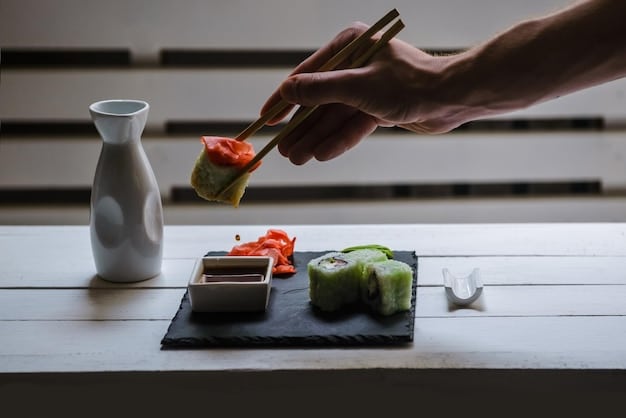
- Finding Specialized Equipment: If a recipe calls for specialized Japanese equipment, such as a tamagoyaki pan or a sushi rolling mat, consider purchasing these items online.
- Experimenting with Local Ingredients: Don’t be afraid to incorporate locally sourced ingredients into your J-drama-inspired meals. This can add a unique twist to the dishes and make them even more delicious.
- Seeking Advice from Online Communities: Join online forums and social media groups dedicated to Japanese cooking to share tips, ask questions, and get advice from other home cooks.
In conclusion, adapting recipes for the American kitchen is a crucial part of recreating Japanese drama food at home. By ingredient substitutions, adjusting cooking times, and finding alternative preparation methods, you can bring the flavors of Japan to your kitchen.
The Social Aspect of Recreating J-Drama Food
Recreating Japanese drama food isn’t just about cooking; it’s also about fostering social connections and creating memorable experiences. Sharing these dishes with friends and family can strengthen bonds, spark conversations, and create a sense of community.
Consider hosting a J-drama-themed potluck, where each guest brings a dish inspired by their favorite show. Or, organize a cooking class where you teach your friends how to make classic Japanese dishes. The possibilities are endless!
Hosting a J-Drama-Themed Potluck
Organizing a potluck centered around J-drama food is a fantastic way to bring people together and share your passion for Japanese cuisine. Ask each guest to bring a dish inspired by the J-drama theme.
Encourage guests to share the stories behind their dishes and explain how they relate to their favorite J-dramas. This will spark conversations and help everyone learn more about Japanese culture and cuisine.
Organizing a Cooking Class
If you’re particularly passionate about Japanese cooking, consider organizing a cooking class. This is a great way to share your knowledge and skills with others.
Choose a few simple recipes that are easy to learn and fun to make. Provide clear instructions and guidance, and encourage participants to ask questions and experiment with flavors.
To summarize, recreating Japanese drama food is more than just cooking; it’s also about building relationships, sharing experiences, and creating lasting memories with loved ones. Embrace the social aspect of cooking to enhance your enjoyment and connect with others who share your passion for Japanese cuisine.
| Key takeaway | Brief Description |
|---|---|
| 🍜 Iconic Dishes | J-dramas showcase dishes like omurice and ramen, symbolizing comfort and love. |
| 🍶 Essential Ingredients | Soy sauce, miso paste, and dashi are crucial for authentic flavors. |
| 🍳 Simple Recipes | Try making tamagoyaki and onigiri at home to start. |
| 🌎 Adapting for US | Adapt with local ingredients or through online communities |
Frequently Asked Questions
▼
The appeal lies in the combination of cultural significance, the visual aesthetics, and the emotions tied to the dishes, making them integral to the drama narrative and viewer experience.
▼
Most of the ingredients you need are found in international supermarkets, or Asian markets. If you have difficulties finding them, you can search online for a retailer.
▼
Feel free to adjust seasoning amounts, swap ingredients you dislike, or incorporate local produce. The goal is to enjoy the process and create flavors that appeal to your palate.
▼
Absolutely! Start with simple recipes like omurice or onigiri. They require minimal cooking skills and don’t have long cook times. As you become more comfortable, try more complex.
▼
You can substitute mirin with sake and sugar, use vegetable broth instead of dashi, or replace Japanese mayo with regular mayo. Refer to online resources for ingredient replacements.
Conclusion
Exploring the world of Japanese drama food is a delightful journey that combines the love of entertainment with the pleasure of cooking. By recreating these iconic dishes at home, you are not only treating yourself to delicious meals but also immersing yourself in the Japanese culture.

